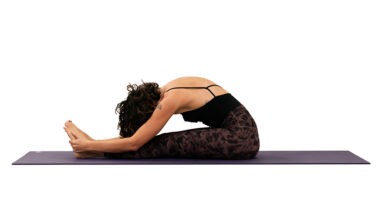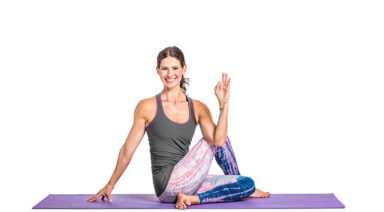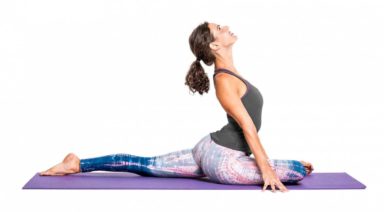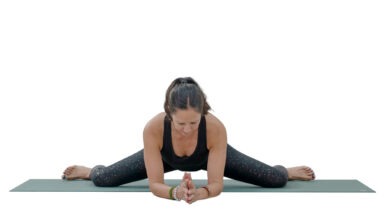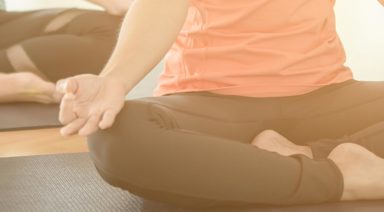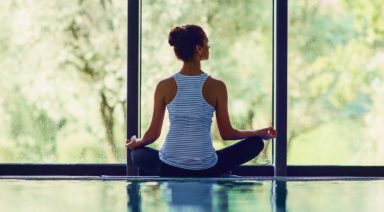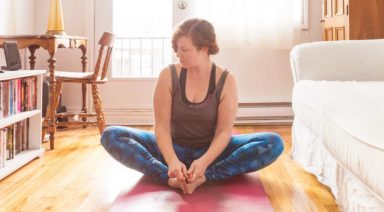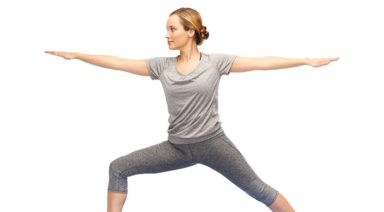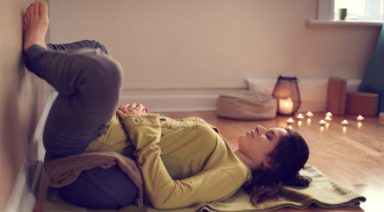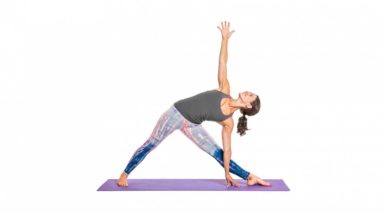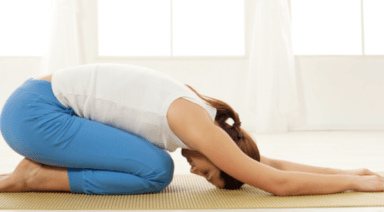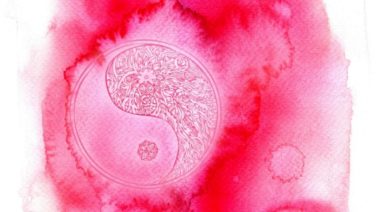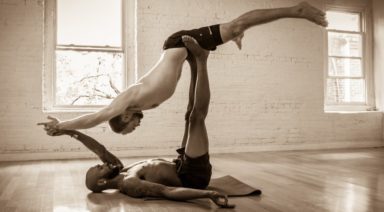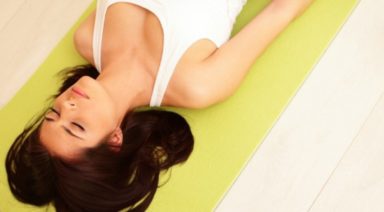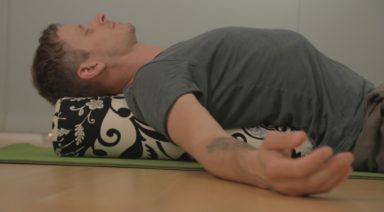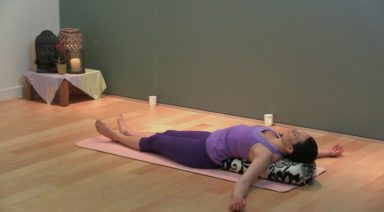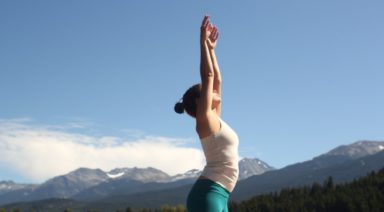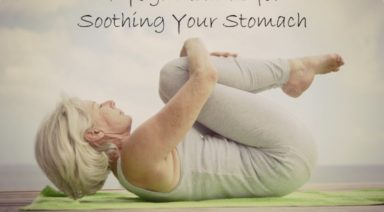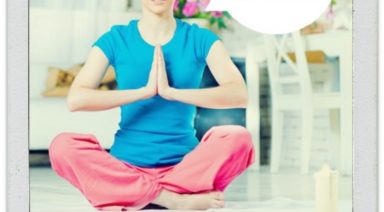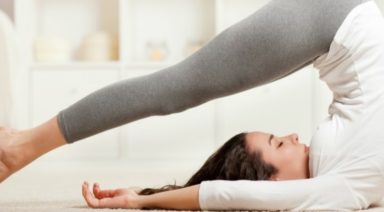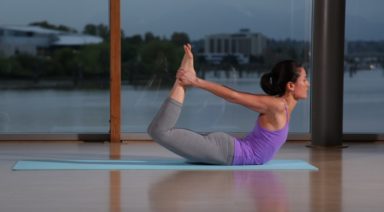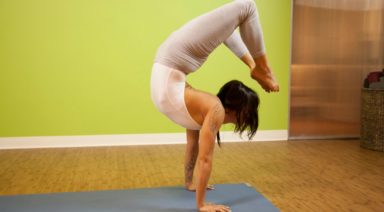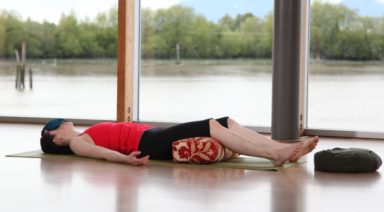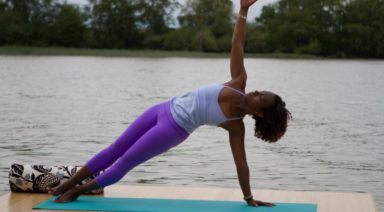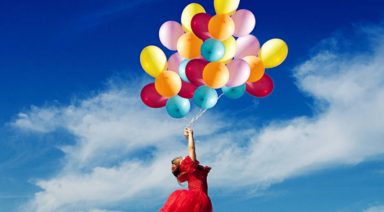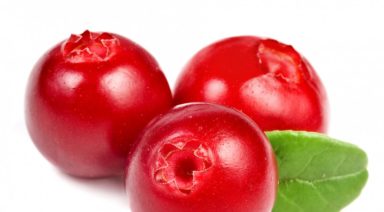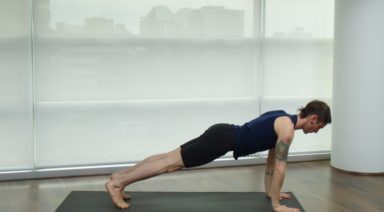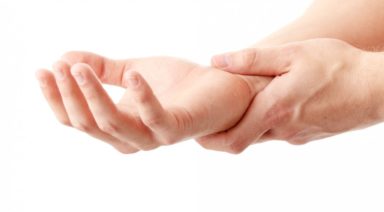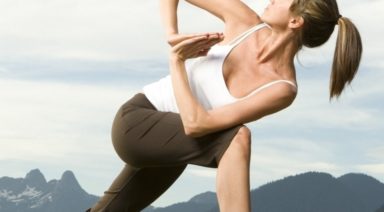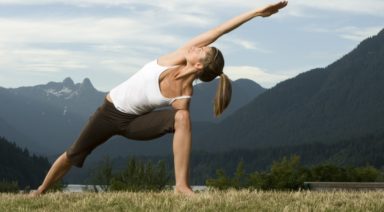Parsva Balasana: Thread the Needle Pose
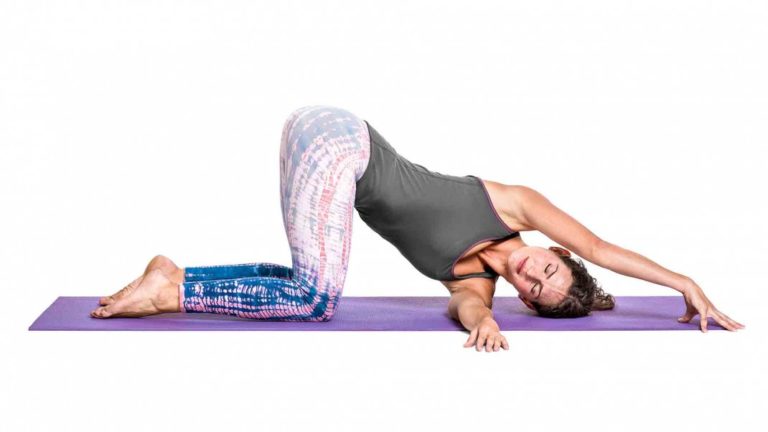
Parsva balasana (PARS-va bah-LAHS-ah-nah) is a simple twist and gentle inversion that can warm up or calm down your body.
Sanskrit:
- Parsva = turned
- Bala = child
- Asana = pose
Physical Benefits:
- Twists the thoracic spine.
- Gently compresses the muscles of the upper chest.
- Stretches the upper and outer muscles of the shoulder.
Preparatory Poses:
- Childs pose | Balasana
- Table top |Bharmanasana
- Cat pose | Marjariasana
Sequential Poses:
- Puppy pose | Uttana shishosana
- Eagle pose | Garudasana
- Cow face pose | Gomukhasana
Counter Poses:
- Downward facing dog | Adho mukha svanasana
Adjustments/Modifications:
- Place a blanket underneath your knees for extra cushion.
- A similar stretch can be done in seated or standing by crossing one arm over your chest and hooking it with the opposite arm.
- Place your forearm (rather than your shoulder) on the ground.
Step-By-Step:
- Begin in a neutral tabletop position with your hands and knees on your mat.
- Exhale to reach your right arm under your left arm.
- Lower your right shoulder and ear to the ground.
- Keep equal weight in your knees, feet straight out behind you.
- Hold for 5-10 breaths. Release back to table top, then repeat on the other side.
###Legal Disclaimer Before participating in any exercise program or using any fitness products or services that may be described and/or made accessible in or through the Gaia Website and/or the Services, you should consult with a physician or other healthcare provider. Read more about Gaia’s Terms Of Use.
About the Author
Gaia guides people on their personal transformational paths with the world’s largest library of exclusive and original conscious media. Like our members, Gaia staff are driven by curiosity, passion and the desire to grow, as we continue on our own spiritual journeys and quests. Our members inspire our own authenticity: the quest for transformation never ends. If there is a topic you’d like to learn more about, please let us know. You can also join Gaia as a contributing author and help us connect readers to people and ideas that fuel a conscious life.
Next Article
Paschimottanasana: Seated Forward Bend Pose
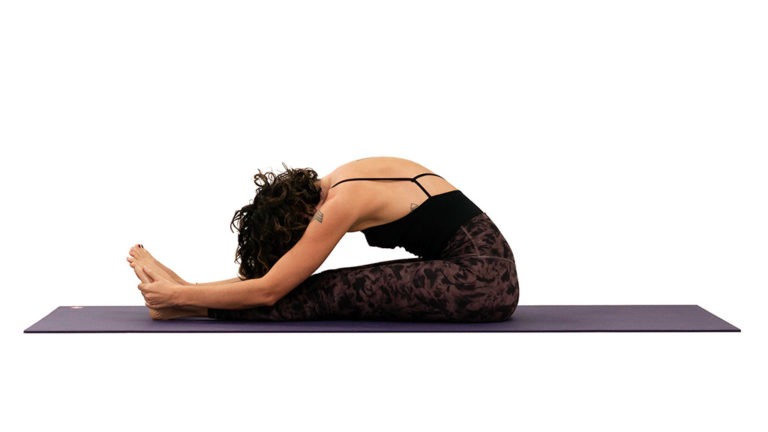
ADJUSTMENTS | BENEFITS | SEQUENCING | SANSKRIT | STEPS
Paschimottanasana (POSH-ee-moh-tan-AHS-ah-nah) invites space to the hamstrings and lower back as well as the mind. While there’s no need to touch your toes in this pose, practicing regularly can help lengthen the muscles in the legs and back to encourage flexibility and ease.
Philosophy + Origin
Paschimottanasana is one of the earliest-known yoga postures, dating back to the Yoga Pradipika. This pose is commonly known as seated forward bend or seated forward fold, but is also referred to as the stretch of the West, referring to the back side of the body.


